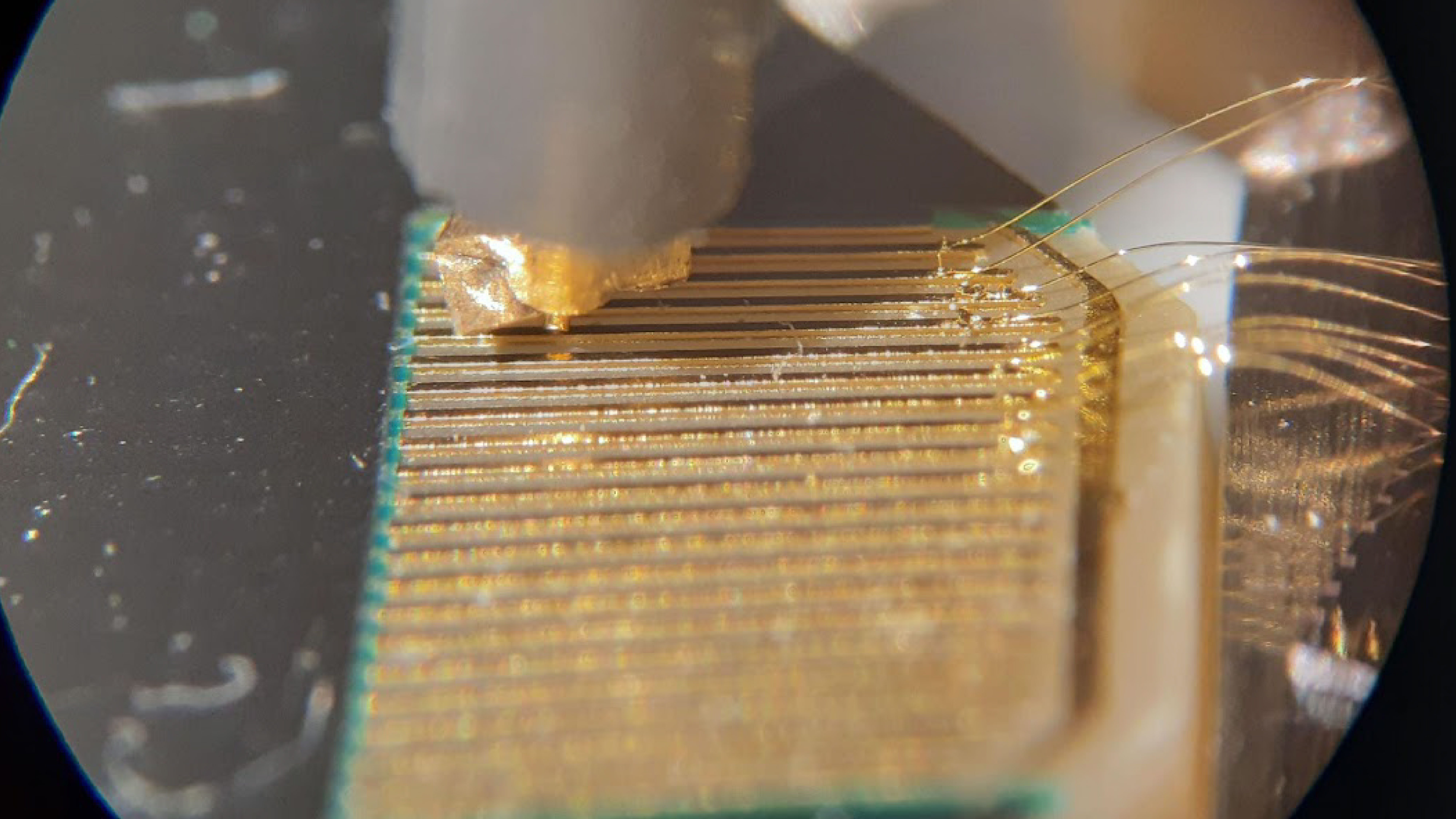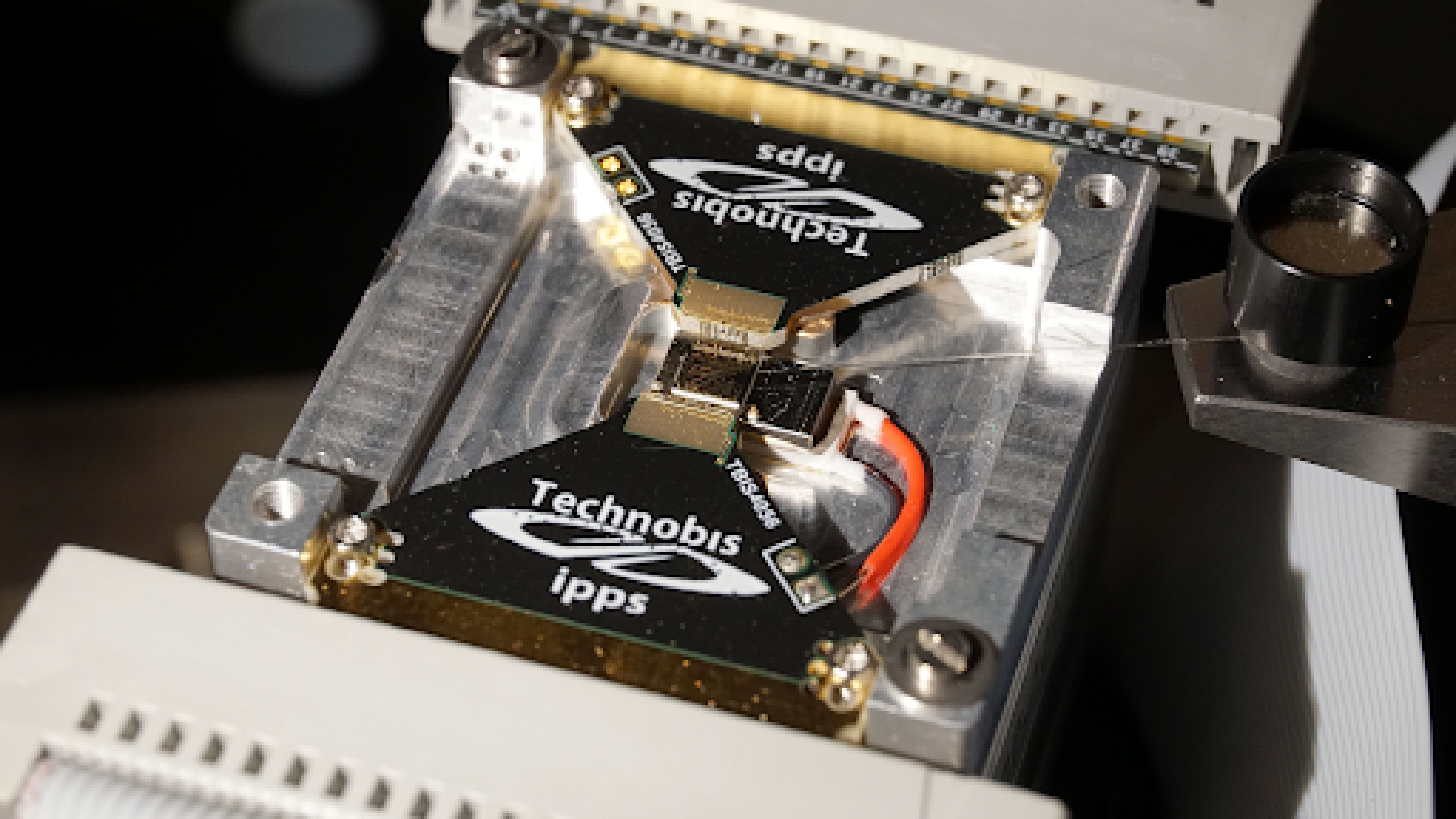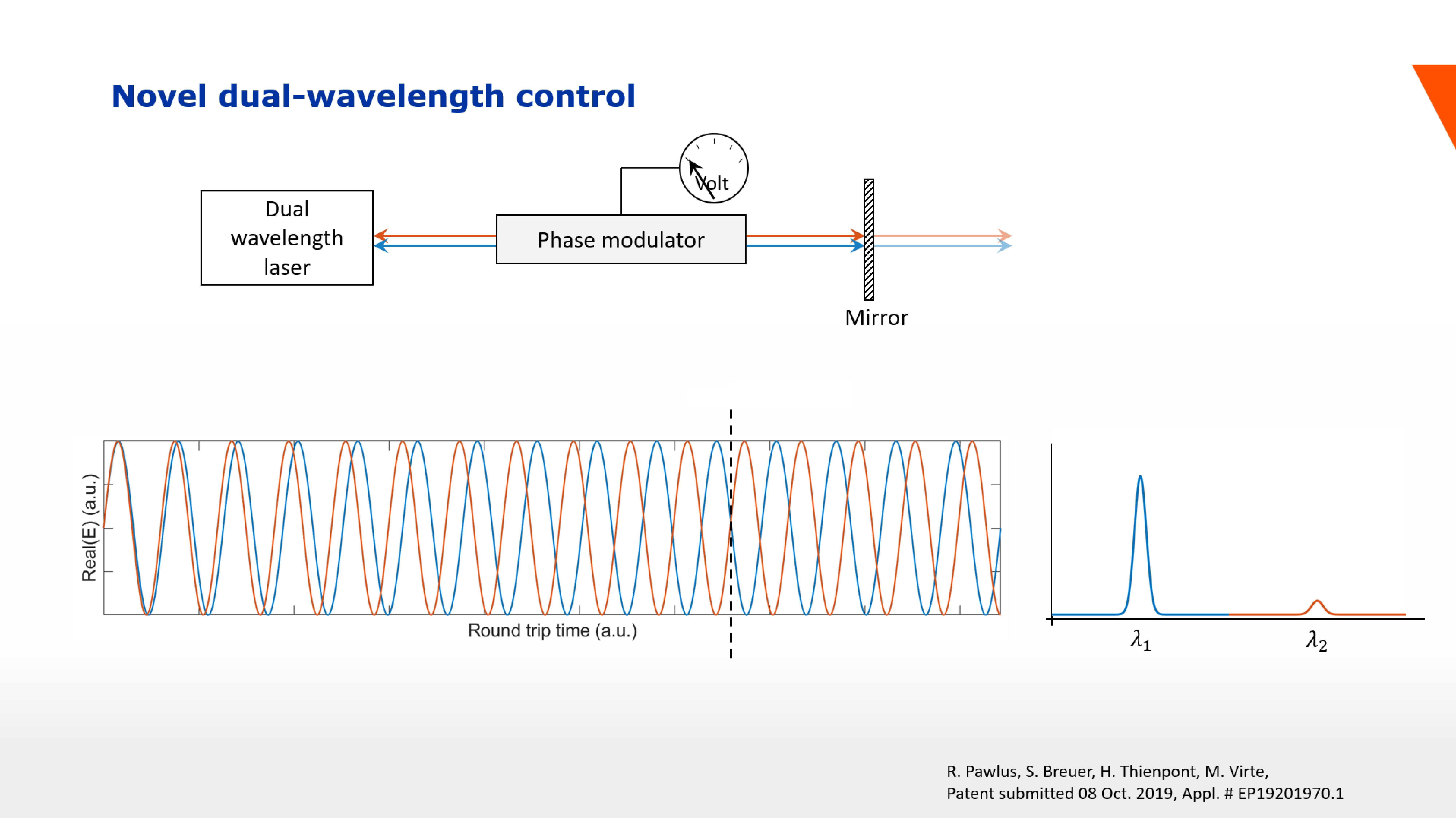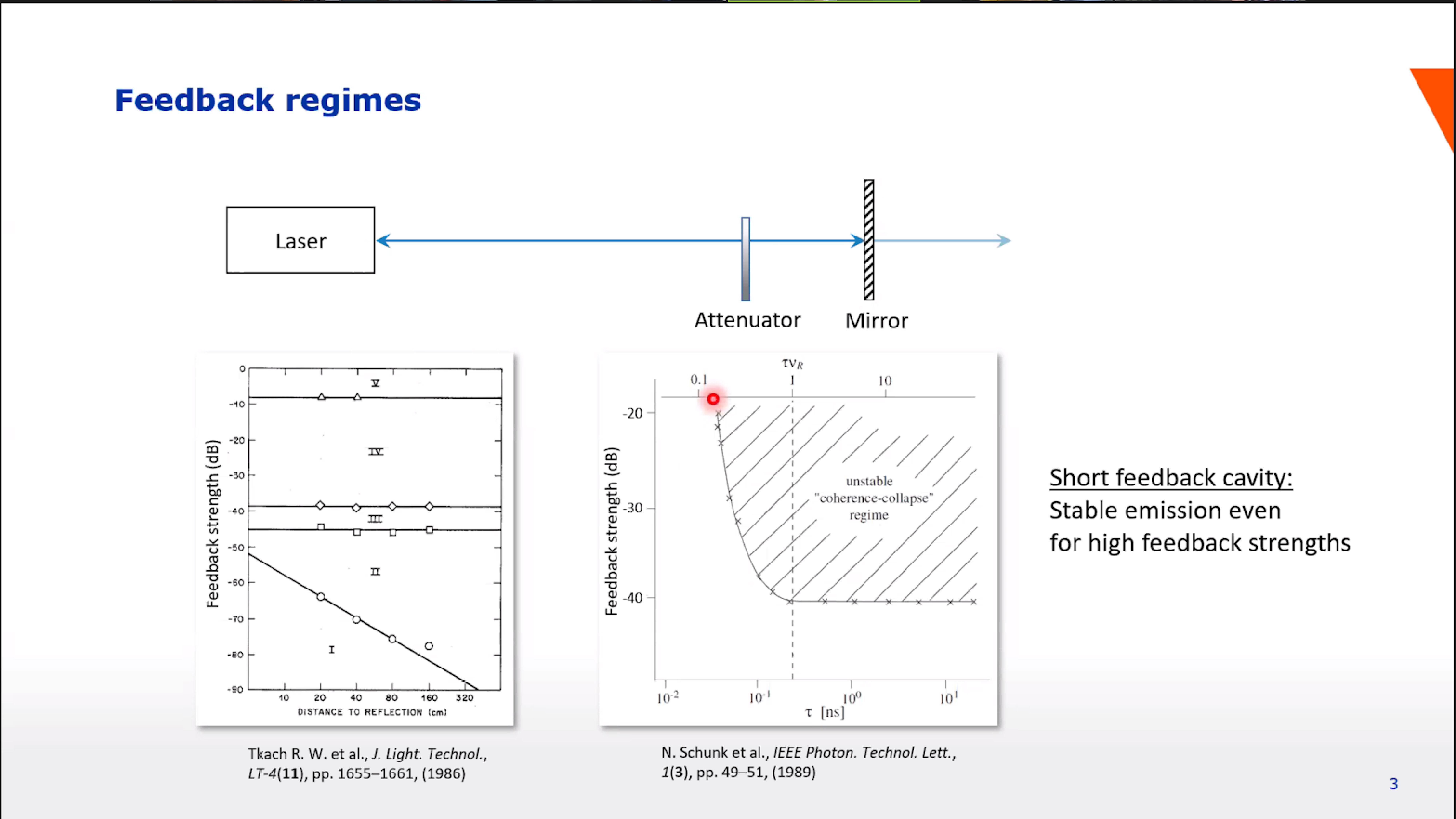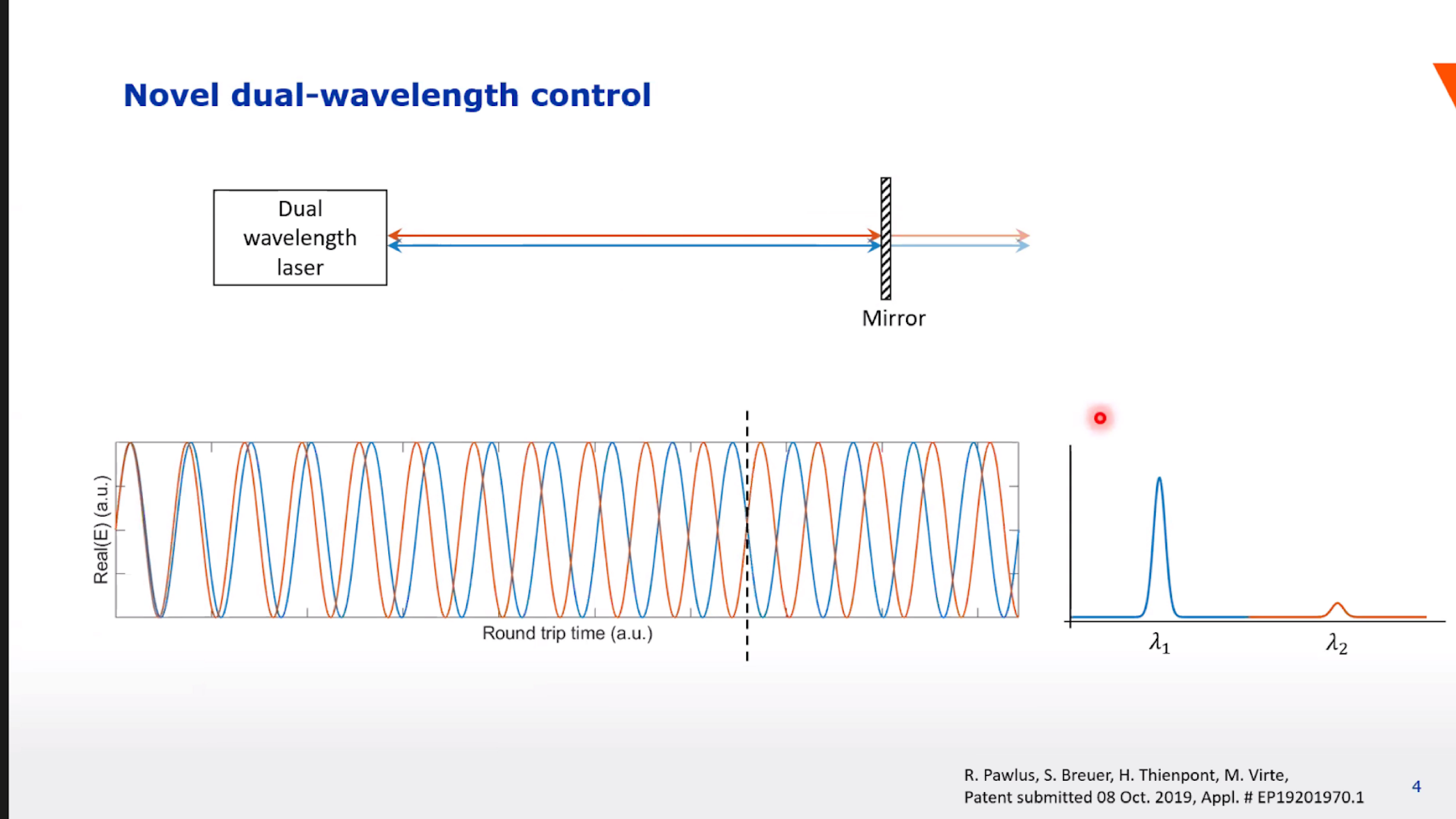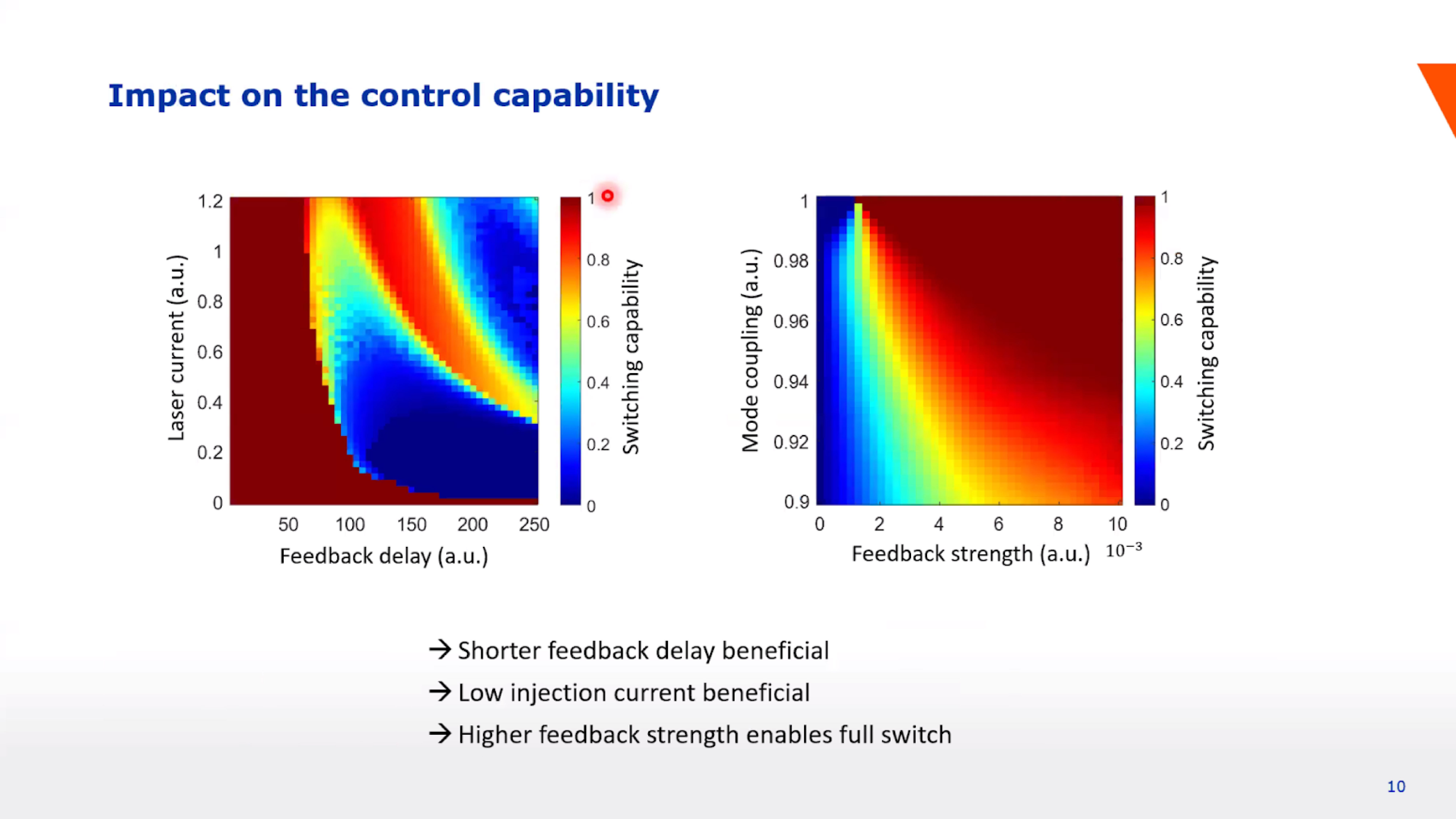Robert Pawlus successfully defended his PhD on integrated dual-wavelength lasers
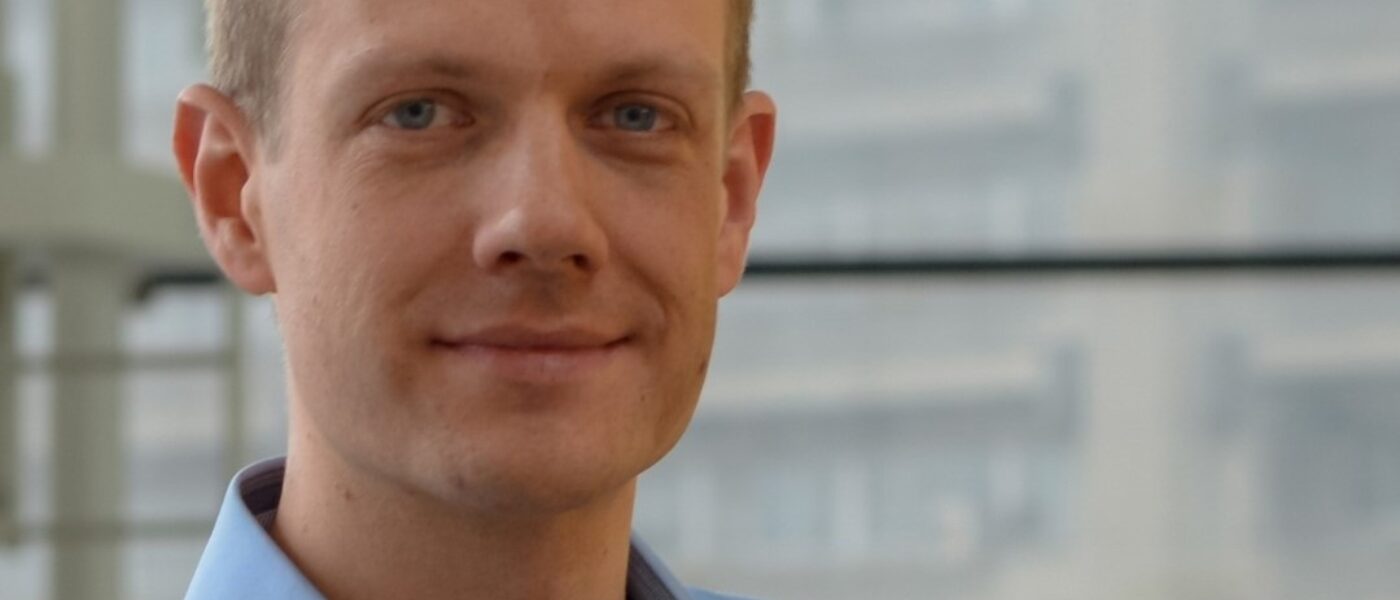
In the frame of a joint PhD between B-PHOT VUB and TU Darmstadt, Robert Pawlus has publicly defended his PhD research work on June 15th, 2020 in front of an international jury. While the defence should have taken place at TU Darmstadt in Germany, because of the measures against the coronavirus, Robert had to work his way through an online defence. He managed to deliver a powerful presentation and give convincing answers to the difficult questions of the jury. For his PhD work and performance at the defence, Robert was awarded his PhD with the highest honours from both the Vrije Universiteit Brussel and the Technische Universität Darmstadt.
Thesis summary
Lasers with the capability to emit simultaneously at two distinct wavelengths - so-called dual-wavelength lasers - are highly desirable in several applications ranging from data communication to the field of THz or sensing, but remain challenging to manufacture. Current solutions can typically be categorized into two groups. On the one hand, external forcing can be used to make a largely multi-mode laser emit at only two wavelengths. These are highly versatile and flexible solutions but are typically obtained through complex and/or bulky setups. On the other hand, laser structures with intrinsic wavelength selection appear to be way more robust but suffer from a lack of external control and flexibility; in short, these devices cannot be fine-tuned. In this PhD thesis, we propose, implement and experimentally demonstrate a simple technique for controlling the output of dual-wavelength lasers relying on a compact external structure that can be easily integrated monolithically with the laser.
This new technique is based on the Fabry-Perot effect of a phase-controlled external feedback cavity. In short, the external cavity will slightly boost resonant modes while the non-resonant modes will see a slight increase of their losses. The phase control then allows to select the resonating modes. As a result, setting the feedback cavity length to ensure that the two distinct wavelengths emitted by the lasers are out-of-phase after a cavity round trip allows to selectively boost or suppress one or the other wavelength on demand.
To demonstrate the feasibility and relevance of the approach, we have first designed and implemented dual-wavelength lasers on a Photonic Integrated Circuit (PIC), using a generic foundry platform. Because the proposed control technique would have the advantage of being particularly compact, we rely on Distributed Bragg Reflectors (DBRs) as wavelength selective elements of the laser, thus obtaining a compact laser as well. We have designed different lasers using DBRs, placed sequentially or in parallel, to achieve dual-wavelength emission combined with a broadband reflector or a third DBR. We then coupled these devices with specifically designed external cavities including an electrooptic phase modulator and a semiconductor optical amplifier in order to control both, the feedback strength and the feedback phase.
After a detailed characterization of the dual-wavelength lasers and, in particular, a confirmation that these were indeed successfully emitting at two distinct wavelengths, we have then explored the effect of the phase-controlled optical feedback on the laser emission. Thus, we were able to confirm that the proposed technique could be consistently used to achieve complete extinction of each mode with suppression ratios as high as 50 dB. Despite varying performances across the different devices, the switching appeared to be particularly robust against most experimental variables. Moreover, we have recorded switching times below 4 ns, which appeared to be mostly limited by the own response time of the phase modulator, and which could potentially be reduced below the nanosecond timescale making it one of the fastest switching techniques currently available. Next, we have investigated the limitations of both the dual-wavelength laser and the control technique. Taking advantage of the large amount of measurements performed across several PICs and lasers, combined with a thorough numerical exploration of the parameter space, we were able to identify different directions of research for further optimizations. Improvements of the DBRs could lead to an improved wavelength tunability that the external cavity could withstand, while the laser and external cavity structure could potentially be optimized to achieve higher output power, higher side mode suppression ratio and a more compact design. Last, but not least, the current results strongly suggest that going from dual to multi (> 3) wavelength lasers could be realistically considered without significant conceptual changes.
To conclude, in this thesis, we propose a new solution to control dual-wavelength lasers through a highly compact and efficient external structure which allows to balance or switch the wavelength emission at will using a single control parameter: the optical feedback phase.

